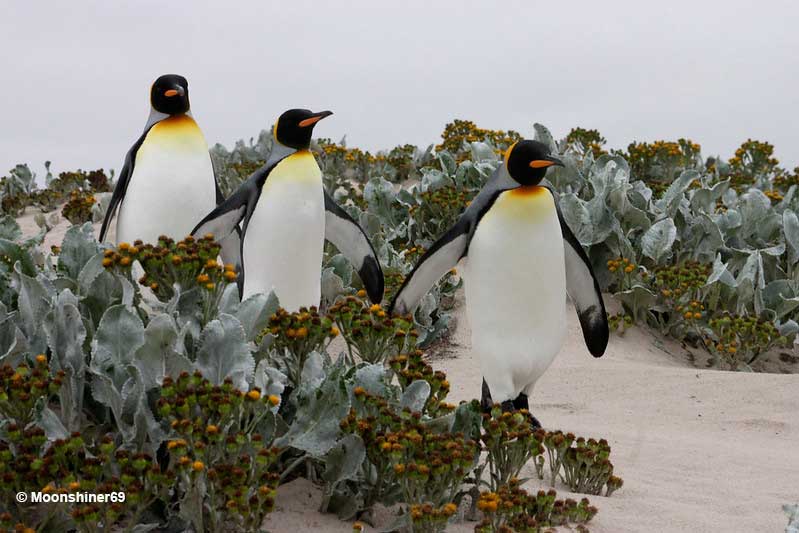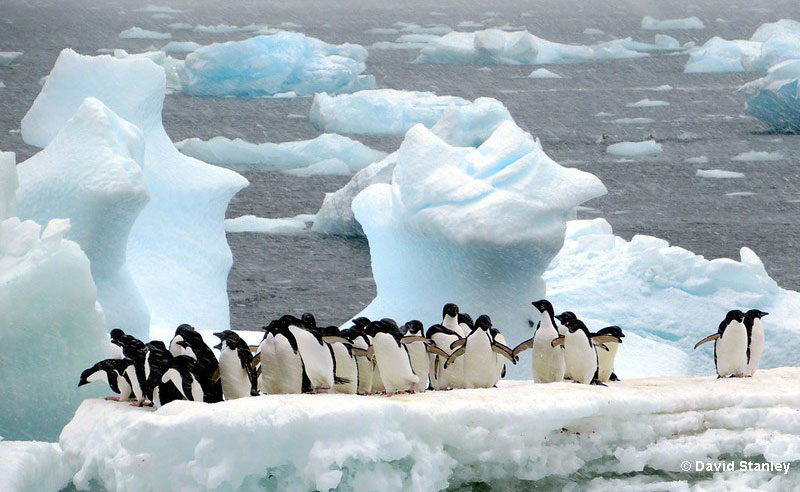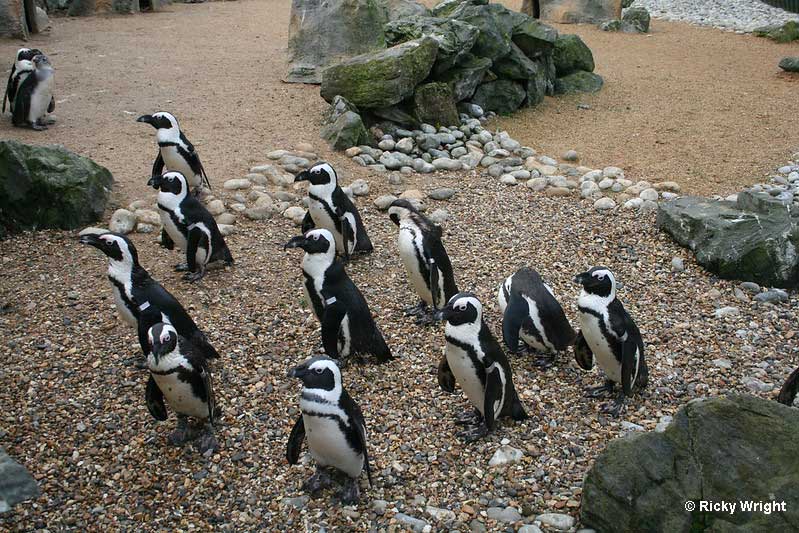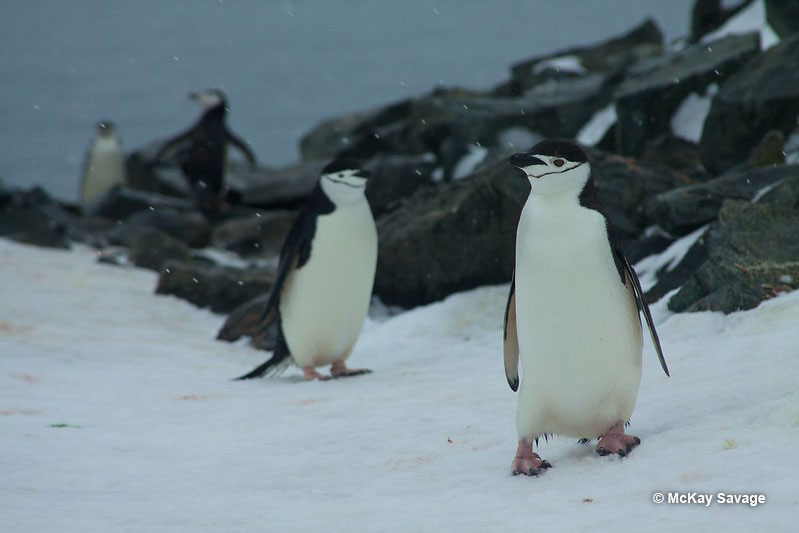
If you’ve wondered if penguins can fly and expected to get a complicated “no, but yes” answer, rich in exceptions, I am sorry to disappoint you instantly. Unlike most birds, penguins can’t fly through the air – and there are no exceptions.
Still, asking that question is not as silly as it may seem at first – after all, Google says it’s common!
Although flightlessness is one of the main penguin traits, many are uncertain if it applies to all penguin species and in all circumstances. Also, you may have seen a nature documentary where birds that look almost exactly like penguins still fly.
Let’s dive in and discover the penguin art of not-flying.
Oh, and the phrase “dive in” will make much more sense later, I promise.
On this page
Why Are Penguins Flightless?
Like with many other animal oddities, it’s all a matter of evolution. Penguins had to adapt to an unusual and harsh living environment – ice sheets, chilling rocks, and the endless ocean around them. In those conditions, swimming is a much more desirable trait than flying.

Let me put it this way. You could easily replace our oinking mammalian cousins from the famous idiom “when pigs fly” with penguins. It might be strange, but despite being birds and having “wings,” penguins would have an equal chance at a successful flight as piglets.
Penguins Have Wings, But They Do Not Fly
Unlike the stunted wings of some flightless land birds such as emus and ostriches, penguins’ wings are well-developed. However, there is a catch – they are built for swimming, not flying.
The penguin wings look more like flippers than real bird wings, and with a good reason. They are paddle-shaped, with flat and broadened bones inside. Also, the joints of wrists and elbows are almost fused, giving the wing-flipper the needed rigidity for cutting through the dense aquatic environment.
Read more: Anatomy of birds
Many people think the penguin’s wings lack feathers, but that is untrue. They are covered with very short, scale-like feathers.
As you see, the specific wing structure is the primary reason why penguins can’t fly. However, it is not the only one.

Penguins Are Chubby – And Heavy
Having hollow bones is one of the crucial avian adaptations for conquering the skies. Due to these lightweight skeletons and air sacks present throughout the body, typical flying birds can soar and stay airborne for a long time.
However, Penguins have much denser bones, filled with bone marrow instead of air. Also, they lack the air sacks – these gave way to their large bellies. The greater their body mass helps them stay under the water and dive to incredible depths. For example, the Emperor Penguins can dive up to 500 meters!
Unlike penguins, birds with air sacks can dive to catch fish, but the pressure pushes them quickly toward the surface again.
How Do Penguins Move Around?
The swiftest way for a penguin to move around is by swimming. And that is pretty much the only efficient way for a penguin to get around.
Just Keep Swimming
All the adaptations mentioned so far serve one purpose: to make penguins fast and efficient swimmers and hunters so they can catch enough fish to sustain themselves and their offspring. A penguin hunting spree can last for months, and it can take them days to walk over the ice to reach their colony. Consequently, it can take substantial supplies of fish to pull it off.
After jumping into the water, penguins flap their wings to propel themselves through the seawater. They can maneuver and dive with excellent speed and agility, which is needed to catch their equally agile prey.
Penguins can also swim on the surface of the water. However, they can’t float well like other birds with air sacks. Instead, they swim only with their heads and back out of the water.
The Penguin Walk
The penguin walk is a symbol of clumsiness and awkwardness. Due to their short legs and upright posture, they seem to waddle and shuffle rather than truly walk.
However, the research can attest that penguin waddling is a very efficient way of moving on ice. Biomechanics experts found that their distinctive side-to-side motion enables them to save energy while still reaching their goal. Other animals of the same size must use twice as much energy to cover the same distance while walking.

How Do Penguins Keep Themselves Safe?
Penguins may seem cute and vulnerable, but they have several effective strategies to keep themselves safe.
First of all, the fact that penguins live in inhospitable environments keeps them safe from many large and truly dangerous predators.
Secondly, they find safety in numbers. The huge colonies they form lessen the chances for each individual penguin to end up caught.
However, sometimes, penguins will still face danger face-to-face, mostly from predatory birds. In a fight, they use their sharp beaks and wing slaps to deter an attacker. What is more, they are often observed ganging up on predators. Even different species of penguins help one another fend off intruders.
When it comes to humans, penguins do not attack if not provoked. They are most protective and thus aggressive in the breeding season when they are fiercely protective of their young.
FAQ
Are there any penguins that can fly?
No penguin can fly. The entire penguin family has bodies adapted to efficient, prolonged swimming and diving – and life in the water is incompatible with flying because it requires a whole different set of adaptations.
However, some birds resemble penguins and can fly. Auks, such as Puffins, physically resemble penguins to the point that some people think they are penguins. However, they belong to a different bird family that is not directly related to penguins. Also, they live in the Northern Hemisphere, while penguins are found exclusively in the Southern Hemisphere. Interestingly, Puffins also rely on marine prey and are excellent divers; however, they haven’t adapted to marine life to the point they lost the ability to fly.
Did penguins ever fly?
According to the researchers, penguins evolved from a common flying ancestor shared with seabirds like petrels and albatrosses. The split happened over 60 million years ago. At first, penguin ancestors gained the ability to dive, similar to puffins. Over time, as they adapted more to an aquatic environment, they became extraordinary swimmers and divers but lost the ability to fly. You can’t have it all.
Conclusion
Penguins stand out as a remarkable example of adaptation and evolution. Their flightlessness was a necessary trade-off so they could develop their incredible abilities underwater. The waddy charming gait also has its purpose, and both features helped penguins conquer the frozen landscapes.
All in all, the evolutionary story of penguins is definitely one of the more extraordinary ones in the bird world.
